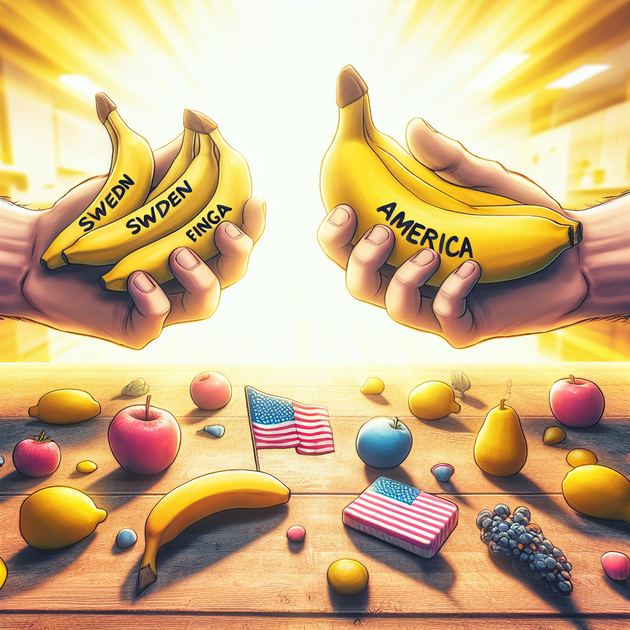Have You Ever Wondered If All Bananas Are the Same Size?
You’ve probably seen the “banana for scale” meme floating around online—a clever trick where someone puts a banana next to an object to give a sense of its size. But here’s something you might not know: not every banana is created equal! In fact, if you’re using a *calibrated banana for scale* from Sweden, you could end up with some wildly inaccurate results.
Let’s peel back (pun intended) the layers of this funny measurement method and see why it’s not as reliable as you might think—especially when those bananas come from Sweden.
## What Is a Calibrated Banana for Scale Anyway?
The “calibrated banana for scale” has become an inside joke across forums like Reddit and image boards everywhere. Basically, when people want to show how big or small something is but don’t have a ruler handy, they’ll plop down a banana and snap a photo. Everyone assumes they know roughly how big a banana is… right?
But here’s the catch—bananas vary in size depending on where they come from. The ones you find in Sweden aren’t the same as the hefty bananas common in America. So that “standard” isn’t so standard after all!
## How Swedish Bananas Compare to American Bananas
Here’s where things get interesting. In Sweden (and much of Europe), bananas tend to be smaller than their American counterparts. That means if you use a Swedish *calibrated banana for scale*, whatever object you’re photographing will look bigger than it really is to someone used to U.S.-sized bananas.
Let’s break down some key differences:
– **Average Length:** American bananas are usually about 7-8 inches long; Swedish bananas often measure closer to 5-6 inches.
– **Thickness:** American varieties are generally plumper.
– **Availability:** Different types of bananas are imported depending on the country.
– **Cultural Reference:** What seems “normal” in one country can be surprising in another.
– **Internet Assumptions:** Most memes assume an “average” American banana—a detail often overlooked!
So next time you see an object dwarfed by a modest Swedish banana, remember it might not be quite as massive as it appears.
## Common Objects People Use For Scale (And Their Pitfalls)
Bananas aren’t the only thing folks use to show off size online—but they come with their own quirks just like other everyday items:
– **Coins** (problem: size varies by country)
– **Credit cards** (mostly standard but not always)
– **Pens or pencils** (thickness and length differ)
– **Cans of soda** (European cans can be shorter)
– **Hands or feet** (everyone’s got different dimensions)
The takeaway? Unless both viewer and poster agree on what “standard” means, using objects like a *calibrated banana for scale* can lead to confusion fast!
## A Real-Life Anecdote: The Great Banana Mix-Up
A friend of mine once tried selling an old-school video game console online. To help buyers get an idea of its size, he snapped a picture with his trusty Swedish supermarket banana beside it. The comments rolled in almost immediately—“Wow! That thing is huge!” Turns out most viewers were from America and assumed he’d used one of their supersized bananas as his reference point.
He ended up having to clarify with follow-up photos and even included actual measurements later on. Lesson learned? Not all scales are universal—even when they’re yellow and slightly curved!
## Should We Retire the Banana Meme?
At the end of the day, the *calibrated banana for scale* meme isn’t going anywhere soon—it’s too much fun! But if accuracy matters (and sometimes it does), maybe grab something truly standard or just add real dimensions alongside your fruit-based reference point.
So next time you see—or use—a Swedish banana in your photos, ask yourself: How big is that thing… really?

Leave a Reply